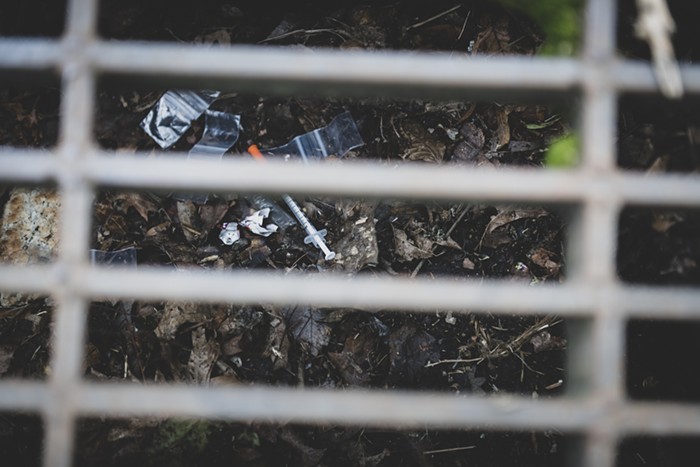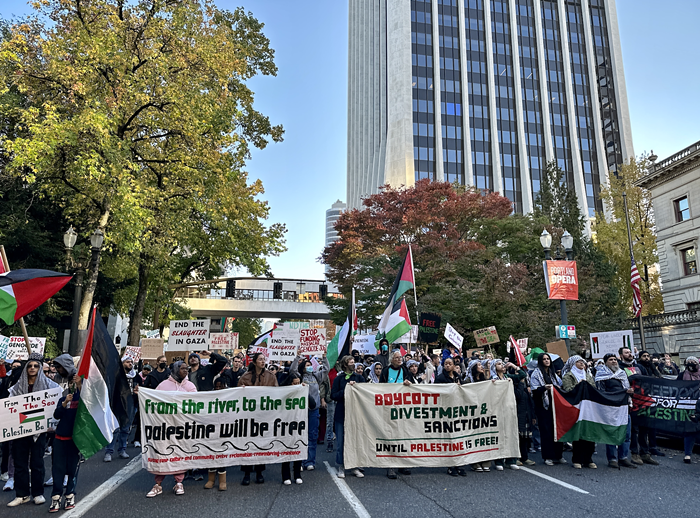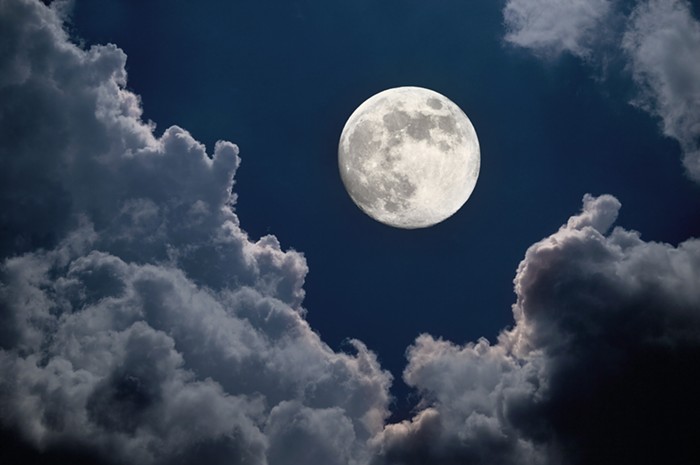AS A BONA FIDE Portland native (fourth generation, not that anyone's counting), let me be the first to say welcome, noob! Now, before you buy up all our properties, drive up our rents, and start complaining about our weather (haha, just kidding! We know you'd never do that.), I thought it'd be prudent to provide a little backstory on our fair hamlet. After all, sharing is caring.
In the Beginning
We had Cascades, Multnomah, and Tualatin tribes living the good life here for about 10,000 years. They mostly walked around naked, had cool piercings and facial tattoos, and didn't have a lot of hang-ups about sex. They pretty much had it made—until Lewis and Clark cruised through in the fall of 1805. Those dudes were the first visitors to bitch about Portland's weather.

- Asa Lovejoy
The Famous Coin Flip
William Overton and his lawyer buddy Asa Lovejoy showed up in 1843, and Overton mentioned he was thinking of making a go of it in the swampy wasteland conveniently located between Fort Vancouver and Oregon City. Overton also hated the weather, so he traded in his half of the land claim to a merchant named Francis Pettygrove, for $50 in supplies he needed to get the fuck out of Dodge. Portland was now owned equally by Pettygrove and Lovejoy. They flipped a coin to see who got to name it. Maine native Pettygrove won, and so did we, because Portland, Oregon, is far superior to Portland, Maine.
Congratulations! You've Made It to Oregon
By the 1840s, thousands of people started showing up via the Oregon Trail. We were officially incorporated in 1851—eight years before Oregon was even a state. The Lewis and Clark Centennial Expo in 1905 really put Portland on the map, and our population jumped to over 200,000.
Shanghai!
Shanghaiing (AKA kidnapping) really did happen! Only, there were no tunnels where drugged sailors were dragged underground onto labor ships bound for China. Since crimping (the official word for kidnapping sailors and selling them into indentured labor) wasn't technically illegal, there was no reason for the tunnels in the first place.
Strippaz
You may have noticed that we have a lot of strip joints in this town. It's true! We reportedly have the most per capita in the US. Shaking your naughty bits for cash is protected by the Oregon Constitution as free speech! Mary's Club is the oldest strip club in town (they introduced topless ladies in 1965), but ads for burlesque shows and "exotic creations of feminine charm" appeared in the Oregonian as early as the 1930s.
Race Relations
Much like today, Portland had a very small African American population in the 19th century. When Oregon was added to the Union in 1859, black people were legally banned from living or owning property in the state, and the punishment for being more than one-quarter black in Oregon was corporal punishment. Exclusionary laws stayed on the books until 1926.
Redlining
During WWII, 40,000 people moved to Portland to work in the Kaiser shipyards, and lived in a little corporate housing town called Vanport. After the war ended, many black families stayed in the shitty, affordable housing because it's not like they could legally buy houses or anything. Redlining by real estate agents and banks—denying home ownership to blacks (and Asians) in certain neighborhoods—was standard practice. In 1948, when a flood wiped out Vanport, the residents had to move into surrounding neighborhoods, where it was pretty clear they weren't welcome. Even though redlining was technically outlawed in 1977, it was still illegally practiced well into the 1990s.
Tom McCall
Governor Tom McCall was one of Portland's heroes. During his stint as a journalist in the 1940s, he highlighted the need to clean up the open sewer that was the Willamette River. In the 1960s and 1970s, when he was governor, he created the Bottle Bill so people would stop littering bottles and cans (and unwittingly provided a source of income for people collecting empties). He created the urban growth boundary system that protects our green spaces from encroachment. In 1970, he gave us our own version of Woodstock called the Vortex! But he was most famous (and beloved) for saying, "Come visit us again and again. This is a state of excitement. But for heaven's sake, don't come here to live."
Activism
Portland has a pretty long history of being a hotbed for direct-action activism, starting about a century ago. We were an early stronghold of the Industrial Workers of the World (IWW or "Wobblies"). In the 1990s, we had an active faction of the Earth Liberation Front, with our own "green anarchist" Tre Arrow who in 2000 famously scaled the US Forest Service building downtown and lived on one of the building's exterior ledges for almost two weeks. He later went to prison on arson charges.
The Dream of the '90s
In the 1990s, Portland was pretty rad. We had a cool grunge scene, there was all this dot-com cash flooding in, and lots of artists and tech people started moving here for the cheap rent. For a while there, it was all party and bullshit. Then the 2000s arrived. When the dot-com thing went tits-up, a lot of the creative types stayed put, a nationally known music scene emerged, Tres Shannon and partner Cat Daddy created Voodoo Doughnut, Fred and Carrie created Portlandia (a parody of Voodoo Doughnut)... AND THEN THERE WAS YOU. Welcome! What took you so long?
More Newcomers' Guide Articles:
Welcome to Portland!
Rain! Rain! Rain! Rain!
A Portlander's Pronunciation Guide
Overrated Portland
Sports!
A Newcomers' Guide to Making Friends
Portland Free Stuff
Getting Around Town
Neighborhood Guide
Finding a Place to Live
How to Apologize for Moving to Portland
Comedy PDX
Bicycle Death Traps
Portland History 101
Portland Myth Bustin'!
Portland Tourist Traps
NEWS
MUSIC
FILM
FASHION
FOOD
DRINK
ART













